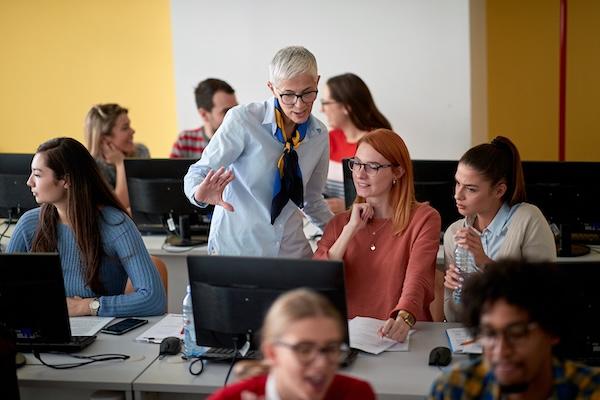
As an educator, you strive to design courses that provide all students opportunities to engage, learn, and succeed. Central to this mission is ensuring your course materials are accessible to all learners. Getting started with digital accessibility can feel overwhelming, but committing to it is as important as ever.
As previously announced by the ADA Digital Accessibility Center, updated regulations for digital accessibility under Title II of the Americans with Disabilities Act (ADA) require that all digital content shared and used across the university be accessible and in compliance with Web Content Accessibility Guidelines 2.1, Levels A and AA (WCAG 2.1) by April 24, 2026. The new rules apply to all learner-facing digital course materials you use in your teaching, including your CarmenCanvas pages, lecture videos, emails and announcements, and the documents and readings you share with students.
Recently published guidance in the Teaching and Learning Resource Center will help you review your course materials and apply best practices to ensure their accessibility. Aligned to Ohio State's centralized Title II resources, but tailored for instructors, Digital Accessibility: Building Course Material for All Learners walks you through foundational accessibility skills and a step-by-step process for reviewing course content.
- First, you will understand the rationale and benefits of making your course accessible to all learners.
- Next, you will build foundational knowledge by learning 7 Core Skills for digital accessibility.
- Finally, you will be guided through the 3Rs Strategy for reviewing course content so you can decide whether to Remove, Replace, or Remediate inaccessible materials.
Digital Accessibility: Building Course Material for All Learners
More Resources and Support
Learn more about digital accessibility by exploring the following trainings and resources.
- Attend an upcoming Drake Institute workshop on making your course accessible for all learners. Workshops have been developed in partnership with the Office of Technology and Digital Innovation and support from Student Life Disability Services and the Digital Accessibility Center. Registration opens soon for the Title II and You workshop series—bookmark our Workshops and Events page to check back for upcoming offerings.
- Introduction to Universal Design for Learning, September 12, 10-11:30 a.m.
- Title II and You: Digital Accessibility for Course Design
- Title II and You: Seven Core Skills in Practice
- Title II and You: Accessibility for Multimedia Materials
- Complete the Drake Institute's online asynchronous training on Making Your Course Accessible to All Learners.
- Get started with Producing Accessible Digital Content, including PowerPoint presentations, Word documents, and multimedia content.
- Explore Digital Accessibility: Title II and You for more resources and guidance on navigating Title II changes.
If you require further assistance, find the appropriate support contact for your needs below.
- For questions or guidance on implementing digital accessibility in your unit, contact your Digital Accessibility Coordinator.
- For questions or guidance related to a student’s registered accommodations, contact Disability Services in the Office of Student Life.
- For questions on Title II compliance and Ohio State’s Minimum Digital Accessibility Standards, contact the ADA Digital Accessibility Center (DAC) at accessibility@osu.edu. Part of the Civil Rights Compliance Office, DAC supports the campus community by providing accessibility expertise, interpreting policy, setting technical standards, investigating complaints, and performing audits.
- For all other accessibility issues or concerns, contact Digital Accessibility Services (DAS) at das@osu.edu. Part of the Office of Technology and Digital Innovation, DAS provides resources and assistance to those producing digital content, acquiring or building digital products, or serving as a Digital Accessibility Coordinator.